25 November – Portugal
The rough seas continued and in the afternoon everyone was confined inside because even the side decks were too dangerous. In the morning during a brief break in the weather we were able to go up to the helicopter pad and marvel at the rainbows that felt so close you could touch them and the foraging sea birds feasting on a bait ball in the massive swell. A stormy ocean is quite the force to behold. Despite the bucking and diving of the ship, we still had lectures! We learned about global circulation and water masses, where to find bathymetric data online, and Iris Thurnerr’s (Switzerland) research onboard on stable water isotopes. It’s incredible that we have the ability to differentiate between oxygen atoms that have one or two more neutrons than others, which makes them weigh just a tiny tiny bit more, and from there we can learn about rates of evaporation over the ocean, the water budgets of remote subantarctic islands, the past climate from ice cores, and the origin of humble rain drops.
26 November – Straights of Gibralter
Finally a break in the weather! Today was glorious – wind that knocked the foam off the wave crests like snow blowing off a mountain top, sun that broke through the clouds in brilliant patches, isolated rain clouds that formed walls of water and drenched us and the ship passed through. The texture and color of the ocean was mesmerizing: a deep, clear, wonderful blue. Something about having one color palette makes the subtle hues of the ocean stand out that much more – the gray slate under thin cloud cover, the blinding white of the reflected sun, the deep blue of the wave troughs. Against all these shades of blue, the orange machinery of our vessel feels almost offensively bright!
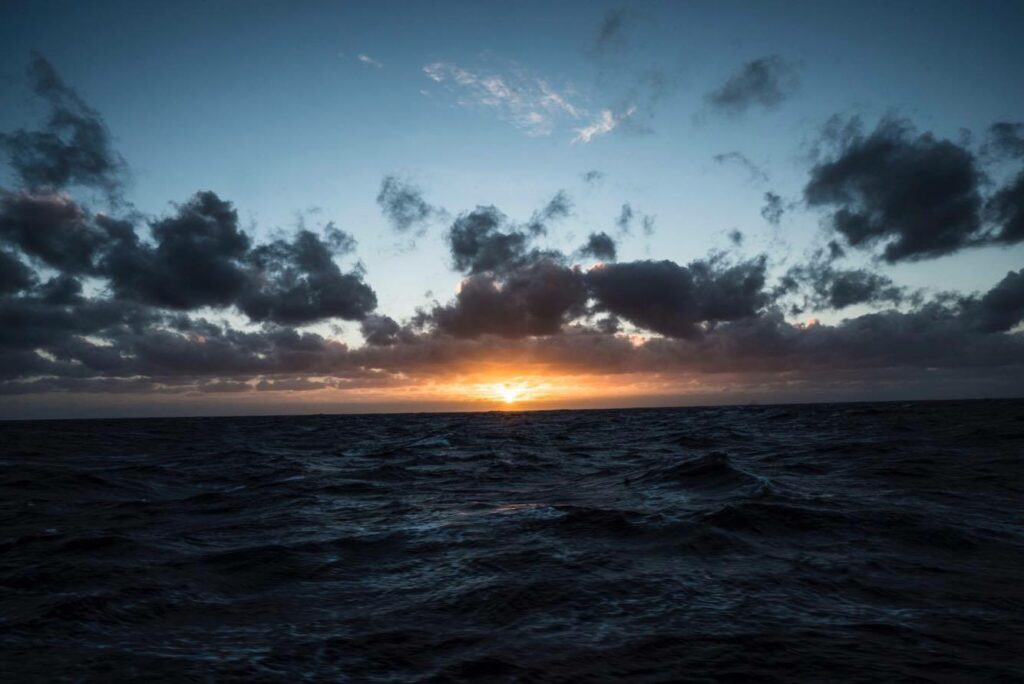
27 November – Canary Islands
Another calm, beautiful day. Today we learned about thermohaline circulation, also known as the ocean conveyor belt. It’s amazing how the movement of the entire ocean is driven by fairly small changes in temperature and salinity. That’s it! And humans are already impacting these patterns of temperature and salinity – sea surface temperatures are rising and polar ice caps are melting so places that were once cold and salty are now just a bit warmer, just a tad fresher. If this pattern continues, the implications for global climate could be severe.
Before we could despair too much about climate change, Tahlia walked us through the impressive international collaborations of peace and science that are the global mooring arrays. These arrays span the equator and continuously measure temperature, salinity, and wind. All data is publicly available online to anyone who wants it. It felt like a beacon of hope and cooperation in a world that feels increasingly divided. We then heard from scientists Mareike Loffler of Germany and Nuria Nenarent Oltra of Spain about their research on board studying aerosols in Antarctica’s pre-industrial atmosphere and trace gases such as ozone, respectively.
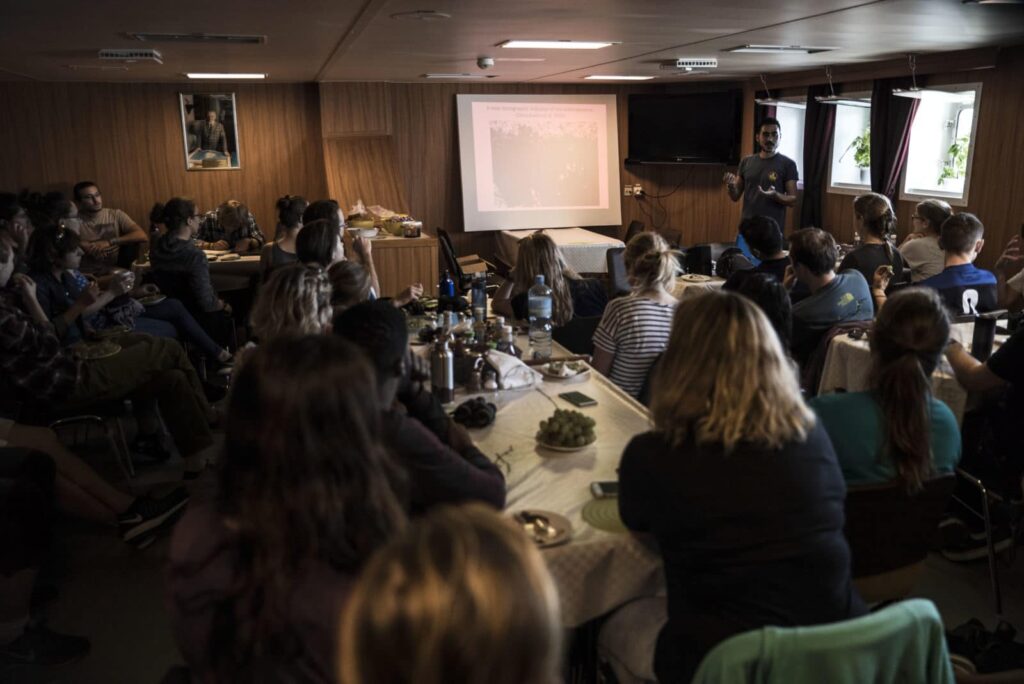
Guiseppe Suaria of Italy gave an alarming lecture regarding plastics and marine litter, to complement Dr. Stefano Aliani’s lecture. He informed us that the cumulative amount of plastic produced is around 5 billion tons!! 300 million tons were produced in 2013 alone, most of which was throw-away packaging. An estimated 8 million tons of this entered the ocean in one year. That’s the same approximate weight of tuna caught that year. As Guiseppe put it, we’re taking out the tuna and replacing them with plastic. His will be conducting the most comprehensive survey of plastics in the Southern Ocean while onboard ACE. Fellow Maritime University student, Veronica Padula (United States), followed his lecture with a talk on her own research on plastics in sea birds on remote islands in Alaska. The take-away from their lectures was that we live in a throw-away society. Change often starts with individual actions and I will work to be more cognizant of my own plastic use.
At night we passed the Canary Islands. The sky was clear and the Milky Way pointed like a path right to the twinkling lights on the islands. Bioluminescent jelly fish flashed in the ships wake, mirroring the stars of the sky and the lights of the islands.
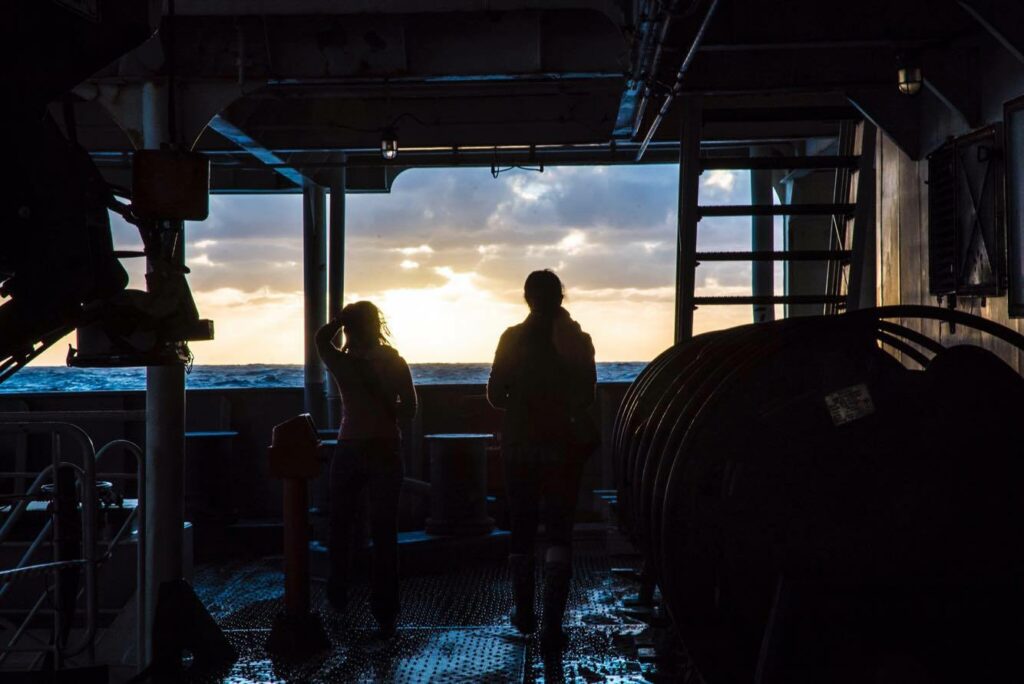
28 November – Morocco
Today marks my 27th trip around the sun! Everyone on board was very kind and gave me hugs and happy birthday wishes. It was fun getting a taste of birthday traditions in other cultures. In Norway, good weather on your birthday means you’ve been good. Happy to report that the sun was shining and the sea was calm! The French and Swiss all told me congratulations – I suppose surviving another year is a feat to be congratulated? The kitchen cooked a beautiful and delicious Russian Napoleon cake with layers of pastry and butter whipped with sugar. This birthday is was definitely one to remember – hundreds of kilometers off the coast of Africa, at sea with people who have only known one another for 11 days though we already feel like family.
Maritime University student, Kyle Neumann, capped the day off with a fascinating and inspiring talk about his work with ROVs (remotely operated vehicles). We’re all itching to build our own now!
29/30 November – Sahara Desert (Mauritania, Senegal)
We’ve entered the region of flying fish! They’re tiny and skim surprisingly long distances just above the water. Many people have seen pods of dolphins and small groups of whales in the past few days! I, unfortunately, have not been so lucky. Today we were in for a surprise – a sea shower! Basically a high pressure hose connected to a pipe with holes that blasts the sea water down in a refreshing, if not slightly painful, deluge of salty ocean. We all took full advantage of the calm seas and tropical sun while slack lining, guitar strumming, and sun bathing on the helicopter pad.
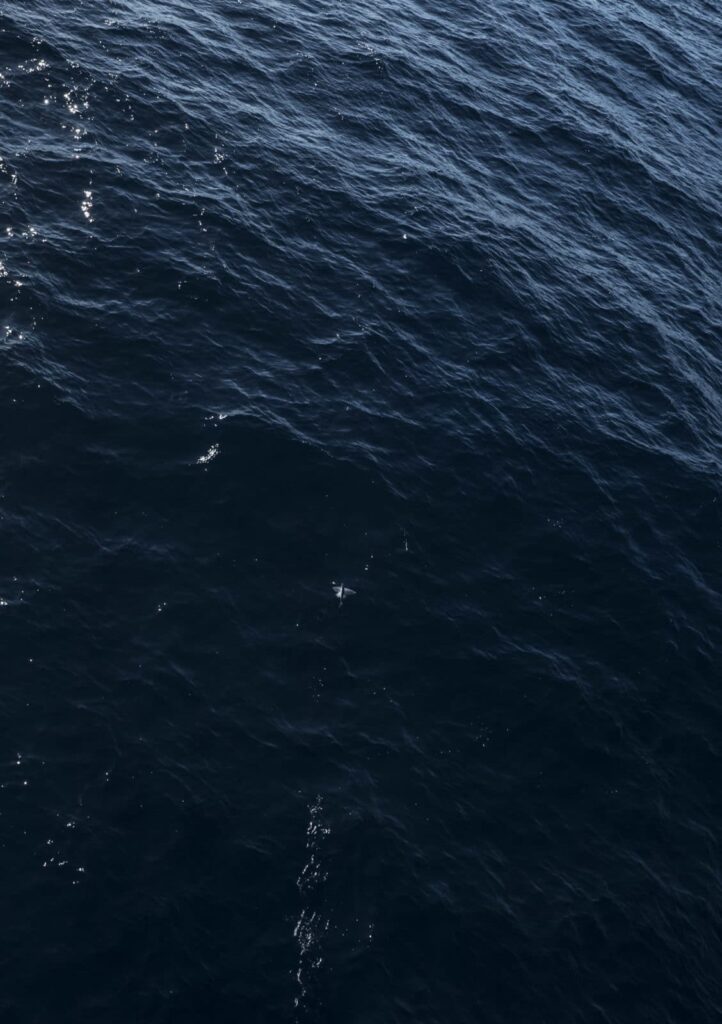
1/2 December – Gambia, Guinea, Sierra Leone
We have entered the doldrums. The sky was a cloudless, hazy blue; the ocean flat and calm. No wind. Everything was hot, humid, and eerily still. It seemed to effect everyone’s mood – everyone moved slower, was less exuberant, day dreamed easily. The only thing breaking up the stillness of the ocean was the flying fish skimming across the surface like dragonflies on a lake and rafts of sargassum seaweed drifting from the Sargasso Sea. It’s amazing to think that ships would get stuck in these regions for weeks or even months, their sails slack and the crew slowly running out of food and likely going a bit mad. As much as fossil fuels are the root of so many problems in this world, they are also an incredible tool for travel, mercifully carrying us out of these flat, windless waters relatively quickly!
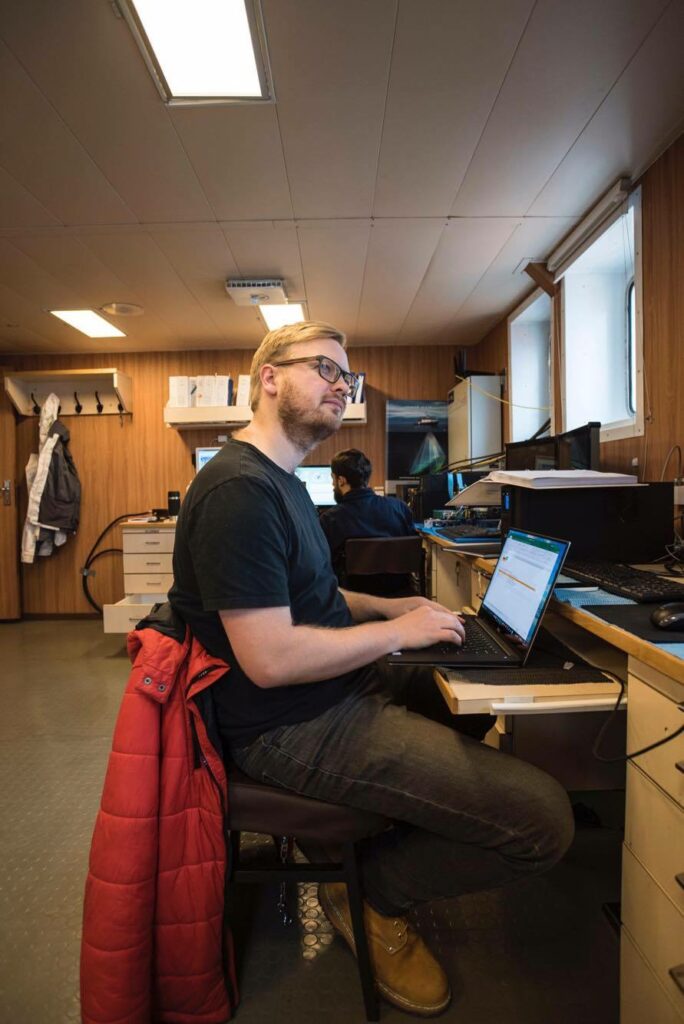
Roland Proud, the chief scientist for Leg 0, attempted to revive us from our stupor by teaching us the basics of Python, a powerful programming language that will likely prove very useful in our careers. Anna Kozachek of Russia walked us through the science of using ice cores to understand past climates. It’s hard to imagine ice right now in this heat! Maritime University student, Paribesh Pradhan of Nepal and studying in Switzerland, presented on his incredible 99 day trek through the Himalayas to understand the impacts of climate change on the remote villages he visited.
In the evening a tropical storm moved in, bringing with it small tornadoes that whipped up the ocean and the lighting that flashed in the clouds dark with rain. It also brought a welcomed respite from the stillness of the ocean and sky.
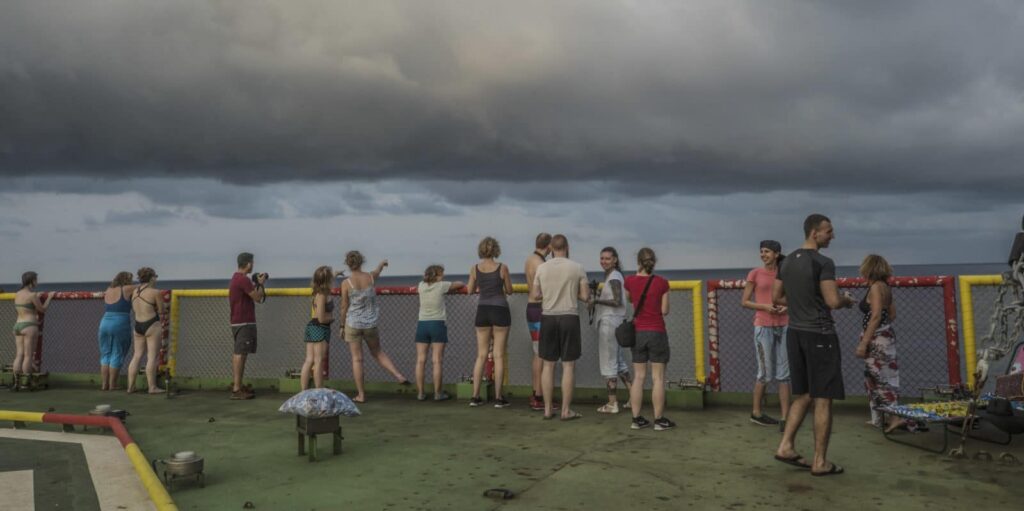
Jordan Hollarsmith
2nd yr PhD in marine ecology, University of California, USA.